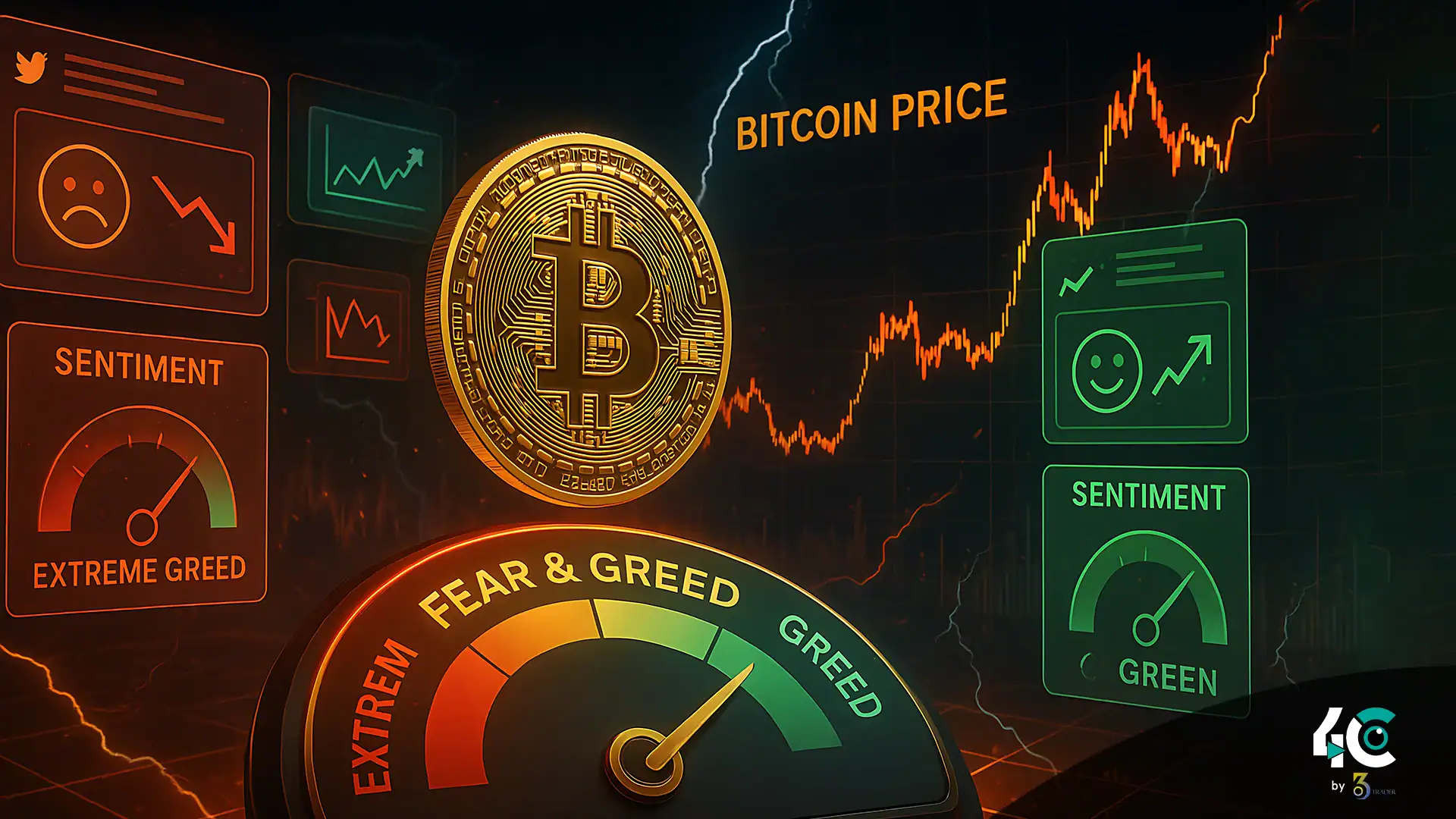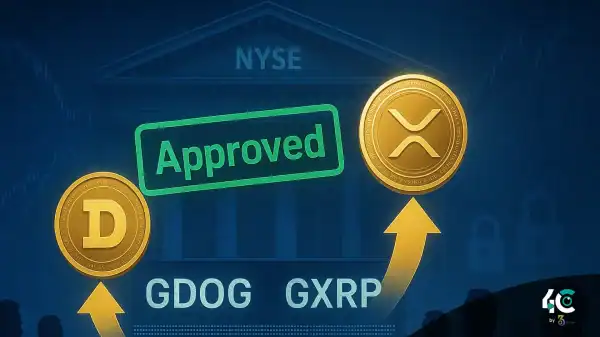Fear greed Bitcoin metrics are powerful tools that reveal how investor emotions like fear and euphoria directly impact Bitcoin’s price trends and volatility.
Understanding Bitcoin Volatility Through Sentiment Analysis
The Fear & Greed Index and Twitter sentiment analysis are two of the most popular metrics used to gauge market sentiment, helping to determine whether investors are too greedy or too fearful. This article demonstrates the historical correlation between these sentiment indicators and Bitcoin’s price rallies and crashes. They seem to have predictive value over Bitcoin.
Understanding Market Sentiment Indicators
Market sentiment is the aggregate mood of all investors. It is bullish, bearish, or neutral. Moreover, market sentiment is key to the price movement of assets. We can refer to the sentiment of an event, asset, or security as its mood or sentiment.
1. The Fear & Greed Index
The Crypto Fear & Greed Index mimics its stock market equivalent by determining the market sentiment for Bitcoin based on several weighted factors.
- Volatility reflects the deviation of price movement from the average of the price occurring over a period. Extreme levels of volatility signal fear, and low volatility means greed.
- When greed pushes prices higher with strong volume and fear lowers prices with increased volume.
- Examining the tweet with frequency and sentiment on Bitcoin.
- The Bitcoin Dominance indicator tracks Bitcoin’s market share relative to other cryptocurrencies. Increasing dominance reflects fear (safe-haven flows), while decreasing dominance suggests greed (risk appetite).
Trends and surveys of investor sentiment from Google searches are incorporated.
The scores may range from 0 to 100:
- Extreme Fear (0–25): Shows panic selling. Buyers may enter.
- There is no clear bias in this comment between positive and negative.
- Extreme Greed (75–100): Indicates overbought conditions; implies risk of correction.
2. Twitter Sentiment Analysis
Twitter acts as a real-time indicator of Bitcoin sentiment. Sentiment analysis tools classify tweets as positive, negative, or neutral using Natural Language Processing (NLP). Key variables include:
- Look for significant increases in mentions during large price fluctuations.
- Sentiment Ratio: The ratio of positive to negative tweets indicates whether the momentum is bullish or bearish.
- A tweet from an influential person (like Elon Musk) or an institutional account moves sentiment disproportionately.
Historical Correlation Between Sentiment and Bitcoin Price
To test how effective sentiment metrics are at predicting the BTC price, we look at times in the past where the price rallied or crashed.
Case Study 1: The Bull Run of 2017
- Price Movement: Bitcoin managed to go from $1,000 to almost $20,000 between January and December 2017.
- Fear & Greed Index: Since late 2017, the index has remained at or near “Extreme Greed” and even reached 90 when retail FOMO came into play.
- Mainly, positive tweets have been issued on Twitter as #bitcoin and #HODL have been trending. Influencers amplified hype, fueling further speculation.
Takeaway:
The Fear & Greed Index reflected euphoric conditions in the market but did not see the crash coming in early 2018. Thus, it is not a forward-looking index.
Case Study 2: The COVID Crash (March 2020)
- Due to the COVID-19 pandemic, the global financial market suffered a hit. As a result, Bitcoin saw a drop from ~USD 10,000 to below USD 4,000 within two weeks.
- The scores fell to “extreme fear” territory (<10) as panic set in among the investors.
- As users voiced worries of liquidity crises and market-wide instability, negative sentiment spiked on Twitter.
Takeaway:
Both the Fear & Greed Index and Twitter sentiment picked up the intense fear that was present during the fall. A 17-word paraphrase of above:
Definitely, when fear strikes, monstrous buying opportunities appear, as was the case with Bitcoin’s epic rally on the cards.
Case Study 3: November 2021 All-Period Peak
- As ETF approvals progressed, Bitcoin hit an all-time high value of $69,000. Institutional adoption has also been reported.
- Fear and Greed Index: Scores are now in the extreme greed (>90) territory.
- Twitter Sentiment: Messages highlighted that mainstream acceptance, long-term value propositions, and other relevant points have peaked.
Takeaway:
After some time, the Fear & Greed Index mirrored the markets, but it did not warn of the downturn that followed.
Strengths and Weaknesses of Sentiment Metrics
Although sentiment indices have notable strengths, they also have some weaknesses.
Strengths
- Sentiment metrics allow traders to get real-time information and feedback on what the market feels.
- “When everybody is scared, it’s time to buy, and when everybody is greedy, it’s time to sell.”
- It’s Easy To Use: The Fear & Greed Index is free to use and very easy to understand, making it accessible to beginner traders.
Weaknesses
- Lagging Nature: Those measurements usually show what is happening now, rather than what will happen next.
- Noise and Manipulation: Social media sites can be targeted by bots, trolls, and coordinated attacks that skew sentiment readings.
- Retail Focus: Sentiment indices are essentially tools for measuring retail investor psychology, which is not necessarily in line with the institutional activity that is driving the bigger moves.
Combining Sentiment Metrics with Other Indicators
Sentiment metrics should be combined with other analytical metrics to maximize their usefulness.
1. Technical Analysis
When you use the sentiment data along with technical indicators in your trading strategy, the chances of success are high. For instance, an extreme bullish sentiment with overbought RSI signals can result in a reversal.
2. On-Chain Data
In addition to sentiment readings, exchange inflows/outflows, wallet distributions, and miner capitulation are important metrics for understanding the crypto market.
3. Macro Factors
Events, interest rate movements, and regulations primarily drive the markets. Short-term swings are fairly normal, so don’t let them bother you.
Using Sentiment in Trading Is Made Easier
By analyzing the Bitcoin Fear & Greed Index and Twitter sentiment of the moment, you can get a better understanding of the market psychology. In the past, they have been reliably effective at identifying extremes—such as panic-driven bottoms or euphoric tops. However, since many have successfully rear-ended the bus, new highs and lows will adopt softer cycles without additional context to help anticipate trend reversals.
Sentiment indicators should not be your only tool but rather a complementary one in your trading toolkit, as a trader point to note. Combining sentiment data with technical analysis, on-chain metrics, and macroeconomic data will enable you to make more informed decisions and better navigate Bitcoin’s volatile price action.
Conclusion
Well-known sentiment indices such as the Fear & Greed Index and Twitter sentiment have correlated nicely to Bitcoin rallies and crashes, notably during the extreme fear or greed phase. However, these indicators tend to be noisy and susceptible to inaccurate representations, so they are lagging indicators and shouldn’t be relied upon alone. Combine sentiment data with technicals to forecast Bitcoin price movements.


































